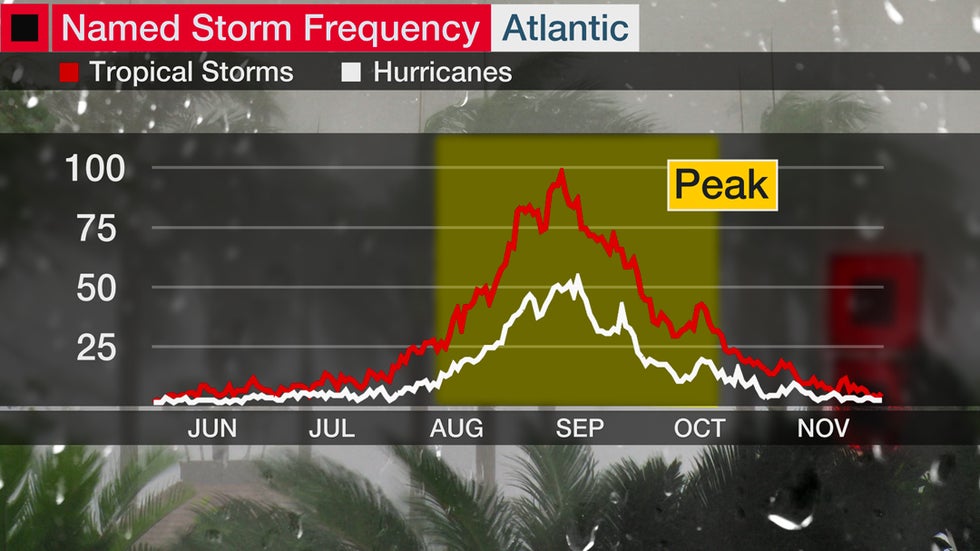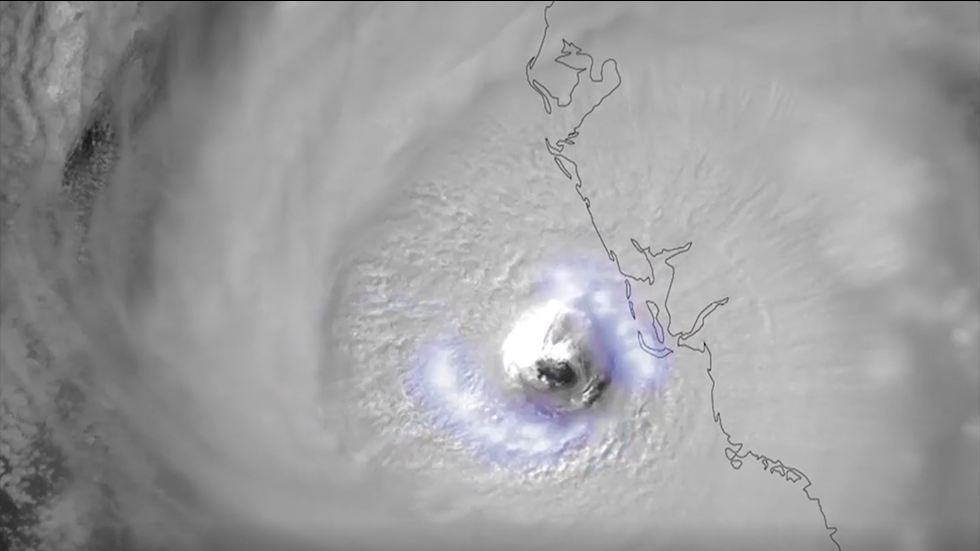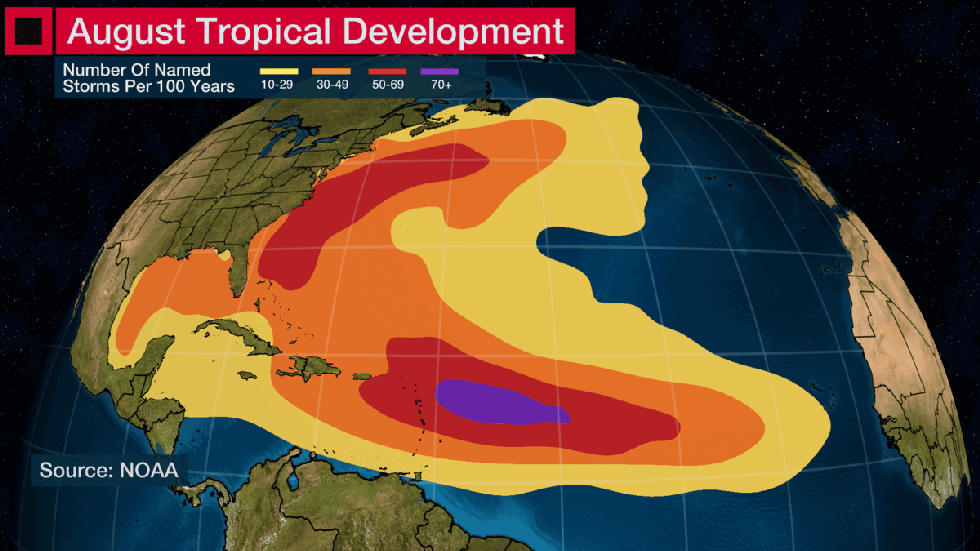Chris Dolce
The Atlantic hurricane season's typical peak is still to come as we begin August and the annual ramp up in tropical activity.
This season has already had the fourth most active start of any season since 1851 with five storms and one hurricane through July 28.
Hurricane season runs from June through November, but in most years, the first two months of the season are typically the calmest. June averages only one named storm every other year, and July has averaged one named storm per year since 1950.
(MORE: Hurricane Season Outlook)
August, September and early October are the peak times when it comes to the most tropical storms and hurricanes. You can see this depicted in the ramp-up of the white and red lines in the graph below.

It's also when some of the most powerful and destructive hurricanes occur. These hurricanes in the past six years all struck the U.S. during the peak of the season:
2022: Fiona (Puerto Rico, then Atlantic Canada); Ian (Florida)
2021: Ida (Louisiana); Nicholas (Texas)
2020: Isaias (North Carolina); Laura (Louisiana); Sally (Florida/Alabama border); Delta (Louisiana)
2019: Dorian (North Carolina)
2018: Florence (North Carolina); Michael (Florida)
2017: Harvey (Texas); Irma (Florida); Maria (Puerto Rico); Nate (Louisiana, Mississippi)
 Satellite view of Hurricane Ian near landfall on Sept. 28, 2022.
Satellite view of Hurricane Ian near landfall on Sept. 28, 2022.Several factors contribute to the seasonal ramp-up that begins in August:
- African easterly waves are most developed, often serving as a seed for tropical storms and hurricanes to form.
- Surges of dry, Saharan air into the central and eastern Atlantic Basin that normally squelch tropical development in those areas tend to give way by August as the parade of African easterly waves gradually add moisture. This opens up more favorable real estate for tropical cyclone development.
- Wind shear – the change in wind speed and/or direction with height, which can rip apart a tropical cyclone wannabe – tends to be low.
- Sea-surface temperatures rise toward a peak in early fall, providing more potential energy for a tropical cyclone.
- Instability – the atmosphere's ability to generate convection (thunderstorms) to develop tropical cyclones – also rises toward an early fall peak.
(MORE: Don't Count On Another Dull August)
All of those factors make for a larger area in the Atlantic where tropical storms and hurricanes can develop, compared to June and July.
 Common development areas for August and September
Common development areas for August and SeptemberOf course, averages and climatology provide no guaranteed outcome in any individual hurricane season. The 2020 season was a perfect example, as U.S. hurricane landfalls spanned from as early as late July (Hanna) to as late as the end of October (Zeta).
However, if you have plans for, say, a Caribbean cruise, and you're concerned about hurricane season, the long-term data would suggest a lower chance of a hurricane interrupting your vacation in June or July, compared to August or September.
Then again, you might be able to nab a great discount on Caribbean travel in August or September. But make sure to buy travel insurance, just in case.
The Weather Company’s primary journalistic mission is to report on breaking weather news, the environment and the importance of science to our lives. This story does not necessarily represent the position of our parent company, IBM.
The Weather Company’s primary journalistic mission is to report on breaking weather news, the environment and the importance of science to our lives. This story does not necessarily represent the position of our parent company, IBM.

No comments:
Post a Comment